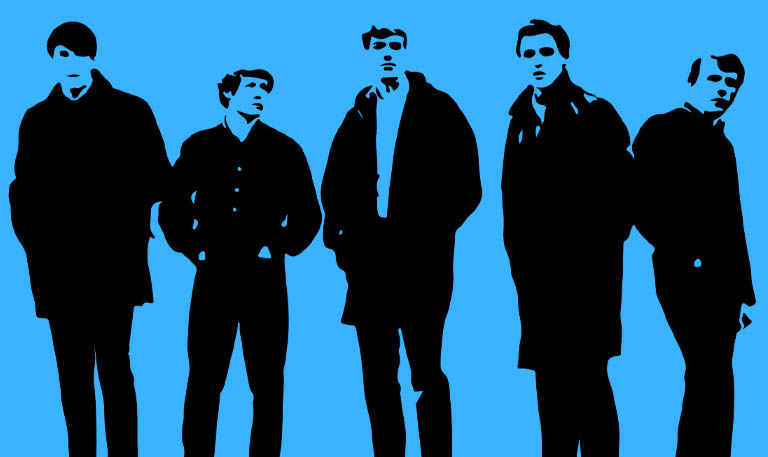If one was to ask a sports-loving fan on a Seattle street their opinions of the Sonics, their reply could be, “Yes. Jack Sikma, Dennis Johnson … those Sonics were the champs! Now, nobody remembers them.”
But ask this same Sonics question in front of the MoPOP (the Museum of Pop Culture) and the answer could be, “That Tacoma band should’ve been huge! Now, nobody remembers them.”
But even though the group, formed in the 1960s, had a sound that wound up not being made for the masses, their massive, raucous sound was appreciated by the late Nirvana frontman Kurt Cobain, who once said:
“The Sonics recorded very cheaply on a two-track and they just used one microphone over the drums, and they got the most amazing drum sound I’ve ever heard. To this day, it’s still my favorite drum sound.”
Indeed, countless groups have tried to copy their distorted, volume pushed to Spinal Tap-ish 11-level sound but never quite can. These include the White Stripes, who cite them as their main influence. The Black Keys tried but only sound like a Sonics’ tribute band on their take of the group’s, “Have Love Will Travel.”
Yes, The Sonics’ sludgy wall of sound was near impossible to reproduce, as it was as unhinged as the noise that roared out of lead singer Gerry Roslie that made him sound as if a mad rock scientist combined Iggy Pop’s snarl and Little Richard’s scream to form one of the more distinctive voices ever in rock.
Their aural onslaught caught the attention of Jordan Albertson, an ex-Whidbey Island resident who turned his passion into an eight-year obsession to finally make the 2018 documentary, Boom! A Film About The Sonics. The flick didn’t get off the ground until Jordan met Pearl Jam’s Mike McCready in a Montana restaurant. Jordan recalled that Mike “called (Heart’s) Nancy Wilson right on the spot” and got the high-profile names in the documentary that attracted enough money to get it funded.
If only The Sonics made some funds back in the day, the original band could have reached greater heights both in acclaim and on the charts. Some could argue they peaked in the early years of their formation in the mid-1960s. Their awesome song, “The Witch,” became a local hit. Bassist Andy Papyra noted:
“We just played a homecoming dance and Pat O’Day (the region’s biggest DJ) came in the next week to do one of his sock hops and give a few records away. A bunch of kids kept requesting ‘The Witch’ so I guess he finally played it and the place went nuts. The next day, Pat started playing (the record on the air). The single then became the all-time best-selling local rock single in Northwest history. O’Day later told me that the song had reached number one in sales, but the station policy said it was too far out to chart at number one. The station only played it after kids got out of schools.”
Buzz around the band was building and in 1966, they opened for big-named groups including the Beach Boys, the Kinks, the Mamas and Papas, and The Byrds. A bigger label beckoned that promised nationwide exposure, so they signed withJerden Records, which had a distribution deal with ABC-Paramount Records. In 1967, the group was sent to Los Angeles to record their third album, Introducing the Sonics. Unfortunately, they were paired with producer/engineer Larry Levine, who had worked with then hot shot producer Phil Spector. Spector’s perfectionist recording ways rubbed off on Larry and rubbed the band the wrong way. Roslie recalls:
“We went down to L.A. to record, and it started to become clear that the way we played, which is just loud and verydirect, wasn’t what the engineer wanted. So, he said to our guitarist, ‘Oh you don’t have to play like that.’ He wasreferring to all the feedback we liked to use and the dark tones we had. So, he said that they would add what theywanted back in the booth, post-recording. So that was frustrating because he wasn’t trying to get our sound—he wastrying to get what he wanted. We went in there, these crazy kids from the Seattle area, and all of a sudden they weretrying to mold us into something we weren’t.”
And not many liked the flawed, finished product, which professionally and commercially finished the band.
Guitarist Larry Parypa went into the insurance world, his brother Andy became a teacher, and sax player Rob Lind went on to be an airline pilot. Director Jordan Albertson added:
“Rob had an amazing story where he had Bruce Springsteen on the plane and Bruce said, ‘Rob Lind? From The Sonics?!” Bruce did an okay cover on The Sonics’ take of Richard Berry’s (writer of “Louie, Louie”), “Have Love Will Travel.”
No word if Lind asked Bruce before their flight, “Have love? We’ll travel.”
Mark Daponte is a copy/blog writer for an advertising company in New York City who has had four short comedic plays performed by various theater companies. He has sold three short stories, three full length screenplays, and punches up screenplays—because they don’t punch back. He currently writes for Culture Sonar (https://www.culturesonar.com/author/mark-daponte/


